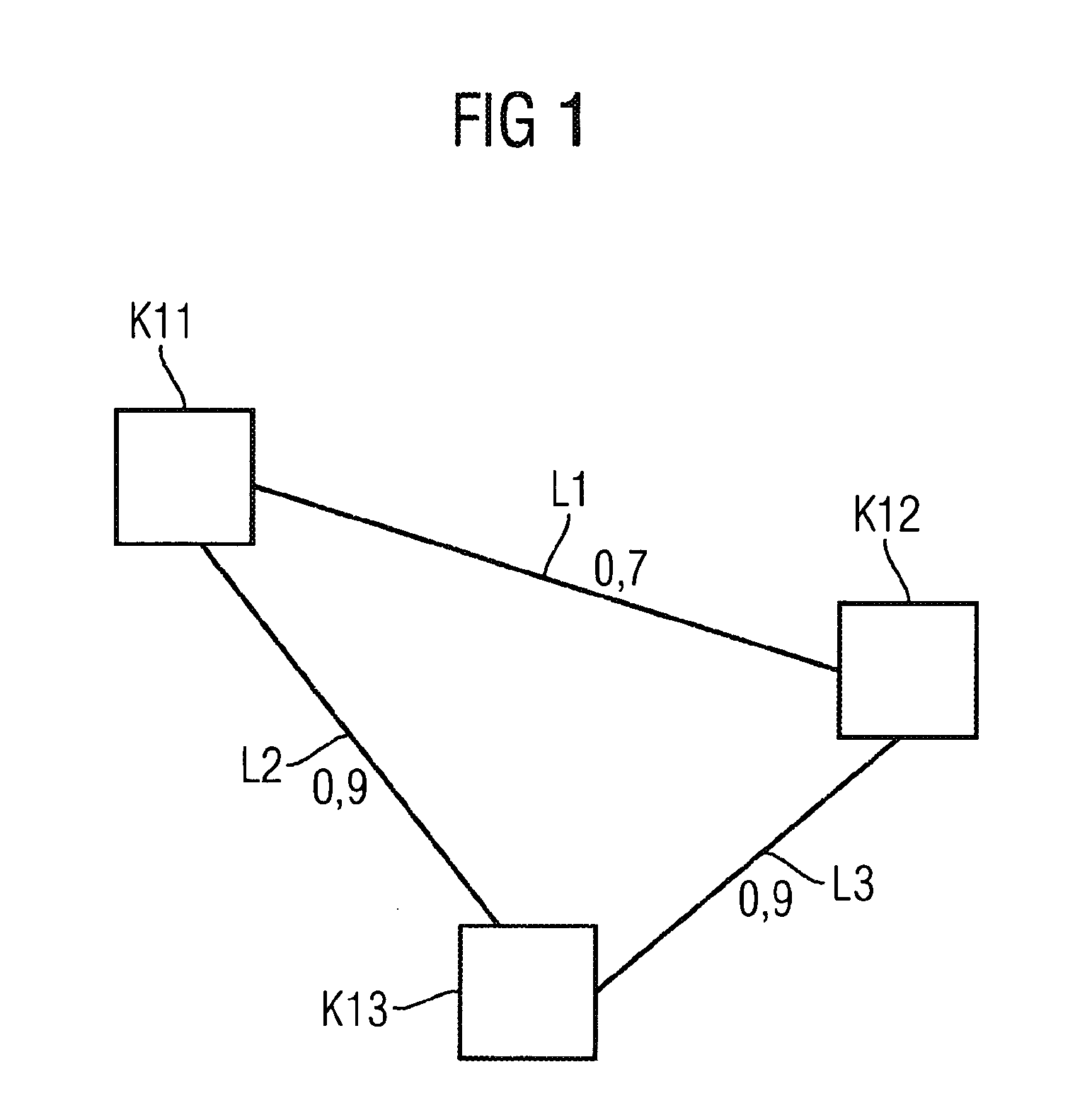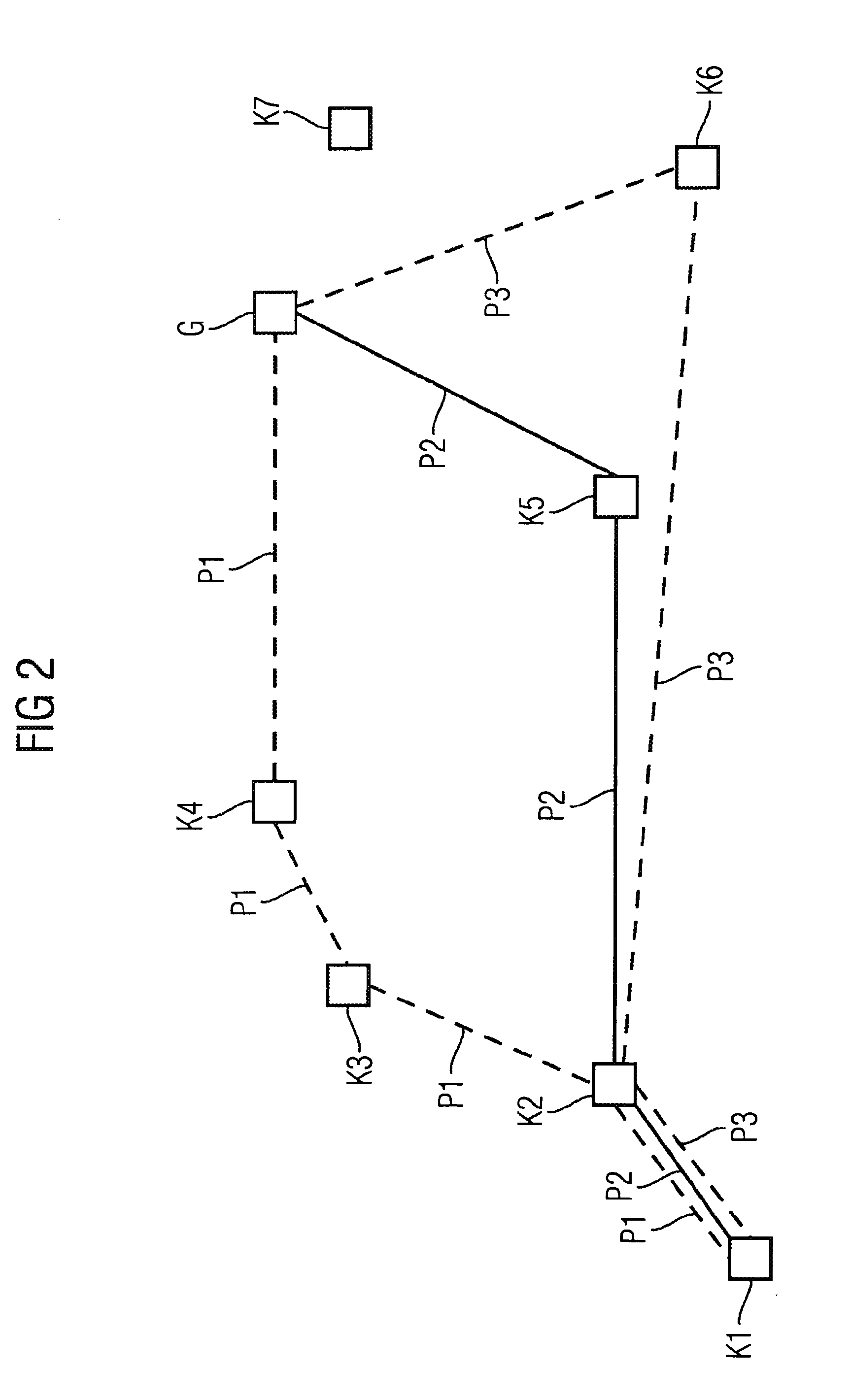Method for Determining a Route Distance Value
- Summary
- Abstract
- Description
- Claims
- Application Information
AI Technical Summary
Benefits of technology
Problems solved by technology
Method used
Image
Examples
Embodiment Construction
[0023]Reference will now be made in detail to the preferred embodiments of the present invention, examples of which are illustrated in the accompanying drawings, wherein like reference numerals refer to like elements throughout. FIG. 1 shows an exemplary network section including an eleventh to a thirteenth node K11 . . . 13. Furthermore, FIG. 1 shows a first link L1 between the eleventh node K11 and the twelfth node K12, a second link L2 between the eleventh node K11 and the thirteenth node K13, and a third link L3 between the twelfth node K12 and the thirteenth node K13. The first link L1 has a link metric of 0.7, whereas the second link L2 and third link L3 each have a link metric of 0.9.
[0024]In this exemplary network section, a data transmission from the eleventh node K1 to the twelfth node K2 take place via two possible paths. The first path includes the first link L1. The second path includes the second link L2 and the third link L3. The first path thus runs directly from the...
PUM
 Login to View More
Login to View More Abstract
Description
Claims
Application Information
 Login to View More
Login to View More - R&D
- Intellectual Property
- Life Sciences
- Materials
- Tech Scout
- Unparalleled Data Quality
- Higher Quality Content
- 60% Fewer Hallucinations
Browse by: Latest US Patents, China's latest patents, Technical Efficacy Thesaurus, Application Domain, Technology Topic, Popular Technical Reports.
© 2025 PatSnap. All rights reserved.Legal|Privacy policy|Modern Slavery Act Transparency Statement|Sitemap|About US| Contact US: help@patsnap.com



